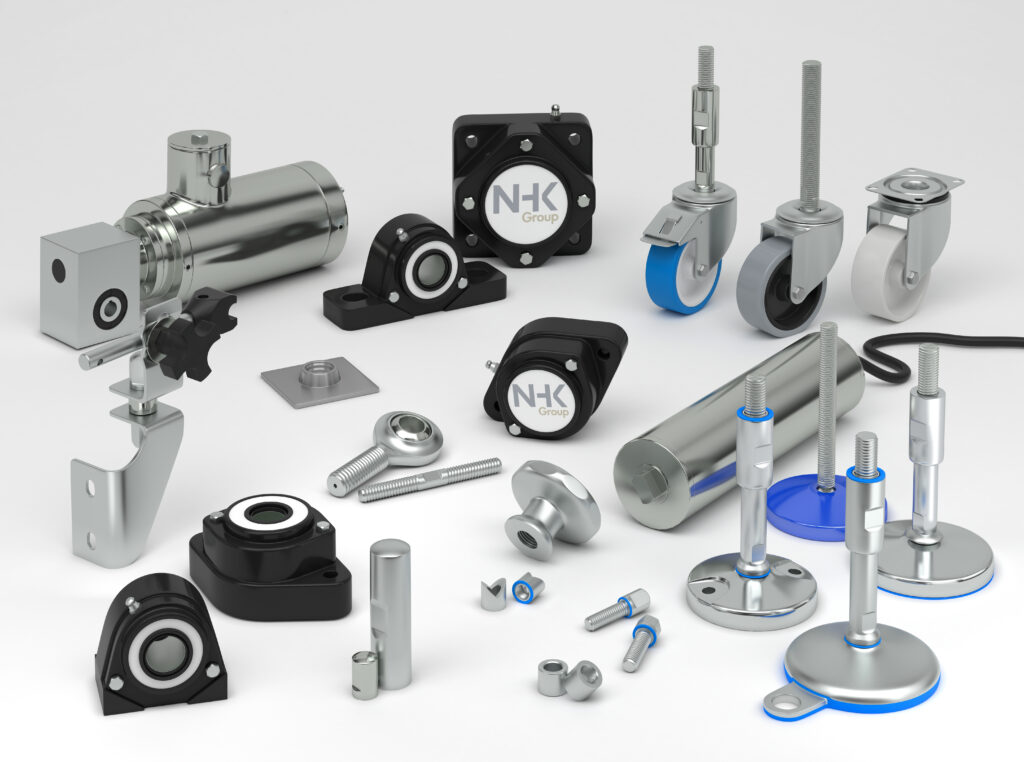
Certified components and parts
Here is an overview of the ecological benefits of using these hygienic components in cutting-edge processing systems:
Deeper Exploration of the ecological benefits
- Improved Cleanability:
- Benefits: Hygienic machinery components are designed to be easily cleaned, reducing the risk of contamination. This minimizes the need for harsh cleaning chemicals and frequent cleaning cycles, leading to a reduction in water and chemical usage.
- Example: The smooth surfaces and rounded edges of the machine leveling feet prevent the accumulation of dirt and bacteria, making them easier to clean.
- Corrosion Resistance:
- Benefits: Many hygienic components are made from stainless steel or other corrosion-resistant materials, which enhances their longevity and reduces the need for replacements. This decreases the environmental impact associated with manufacturing and disposing of machinery parts.
- Example: The stainless steel used in the casters and bearings ensures they withstand harsh cleaning agents and environments without corroding.
- Enhanced Durability:
- Benefits: Durable components have a longer lifespan, which reduces the frequency of part replacements and the associated manufacturing and transportation emissions.
- Example: The robust construction of NHK’s bearings and casters ensures they perform reliably over extended periods, even in demanding conditions.
- Energy Efficiency:
- Benefits: Hygienic components can contribute to the overall energy efficiency of processing systems by reducing friction and wear. Efficient machinery consumes less energy, lowering the carbon footprint of the processing operations.
- Example: High-quality bearings reduce friction in moving parts, leading to smoother operation and lower energy consumption.
- Reduced Waste:
- Benefits: By using components that are easy to clean and maintain, the amount of waste generated from worn-out or contaminated parts is minimized. Additionally, the extended lifespan of these components means fewer parts end up in landfills.
- Example: The easily replaceable and maintainable nature of the components ensures that only the necessary parts are replaced, reducing overall waste.
- Compliance with Environmental Regulations:
- Benefits: Using certified hygienic components ensures compliance with stringent hygiene and environmental regulations. This not only avoids legal penalties but also promotes sustainable practices in the industry.
- Example: NHK’s components likely adhere to various international standards for hygiene and environmental impact, ensuring they meet regulatory requirements.
Product line | NHK Machinery Parts
Integrating NHK’s hygienic machinery components into cutting-edge processing systems offers numerous ecological benefits, including improved cleanability, corrosion resistance, enhanced durability, energy efficiency, reduced waste, and compliance with environmental regulations. These advantages contribute to more sustainable and eco-friendly industrial operations.
For more detailed specifications or inquiries about specific components, you can visit NHK Group’s official website or contact their sales team directly.